Starting your own food blog — or any blog — can be intimidating ,overwhelming, and frustrating. I’m not a professional, but here are my personal tips on how to start a food blog.
Quality matters more than you could ever imagine. Nobody cares if you update your blog every single day if the quality is lacking. It’s better to produce quality content once a week than put out sub-par filler content every day. Gorgeous photos of your food is another huge part of all this. If your food doesn’t look good, nobody is going to want to eat it (or make it).
The first several years of my blog, I didn’t know wtf I was doing. I had terrible lighting, subpar equipment, you name it. But I loved what I was doing. I didn’t have any “how to start a food blog” tips or tricks, I just winged it and used whatever was free. Free themes, free plugins, free ads, etc. It sustained me long enough, but now I see my blog as an investment. I don’t mind spending money to put back into it, and so far it’s been a very smart move. If you’re just starting out, I recommend you go the “free” route. As your traffic and income grow, start spending a little more.
Also, while you’re here, check out my recipes! If you have any questions, feel free to email me. I will update this page as I think of things, so check back often.
How to start a food blog
Buy your domain
You have probably done this already, but if not, stop wasting time. Pick a simple and descriptive dot-com name. This will also be your “brand” name, so choose wisely. Try to avoid a dashed domain name if possible (ie: my-food-blog.com). Head on over to GoDaddy, and buy it before someone else does. Check RetailMeNot for any possible coupons to help you save a few bucks. Make sure you choose the option to keep your WHOIS information private. Chop, chop!
Find a Hosting Company
CarnalDish is hosted by Dreamhost using a VPS server. Their shared plans are very affordable, and I don’t have constant issues with them like I’ve had with other companies in the past. No hosting company is 100% perfect. Everyone’s experience will be different, but I do recommend this company based on my own personal experience. Start with a shared plan you can afford, but you’ll eventually have to upgrade to a bigger plan once your site starts gaining more traffic. You don’t want to push potential readers away because your site loads too slowly, so be prepared to invest once your blog takes off.
Blogging Software
I’m using WordPress for CarnalDish. It’s an open-source software that allows you to create your blog/website, and it’s incredibly user-friendly and powerful. Many web hosting companies come with WordPress pre-installed, so all you have to do is literally click a button and you’re good to go. I highly recommend this software to start your blog/website.
Pick a Theme
CarnalDish uses the Foodie Pro Theme, which is a “child-theme” on the very powerful Genesis Framework. Many food blogs use this theme, and just customize it to their needs. If you’re looking for a free theme, you can find many here. You can do it big with something $Free.99 for a long time (I did) until you’re ready to invest. But when you are ready to invest in your blog, check out the themes on Studio Press or Elegant Themes. Choose a theme that is appropriate for the type of content you intend on sharing. You’ll find that at least 70%+ of your readers will be looking at your site thru their phones or tablets, so make sure you pick a mobile-friendly responsive theme.
Recipe Plugins
I use WP Tasty ($75.00) to publish my recipes, and I absolutely love it! Any good recipe plugin will take care of making sure your recipes get you ranked easily on Google. If you’re not ready to spend on this plugin, here are some I’ve used before that are great and free. Easy Recipe is what I used prior to WP Tasty, and it has both a free and premium ($25) version. I’ve used both the free and premium, and I highly recommend either one.
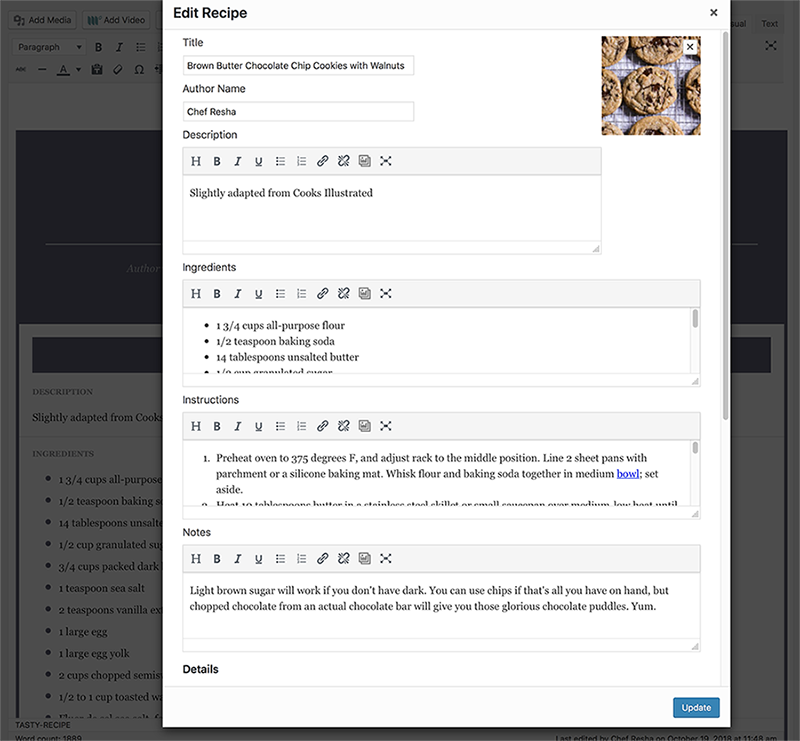
Screenshot of WP Tasty’s backend. This is what it looks like as you enter your recipe. It’s very straightforward and simple to use.
SEO
CarnalDish uses the Yoast SEO Premium ($89.00) plugin. There is also a free version. What is SEO? It stands for search engine optimization. It’s an extremely crucial factor for your website. Many things contribute to SEO, so I won’t get into too much detail here, but trust me when I say you want to invest in this if it’s the only thing you invest in. What good is all the effort of blogging when you can’t even show up in search engines for basic search queries?
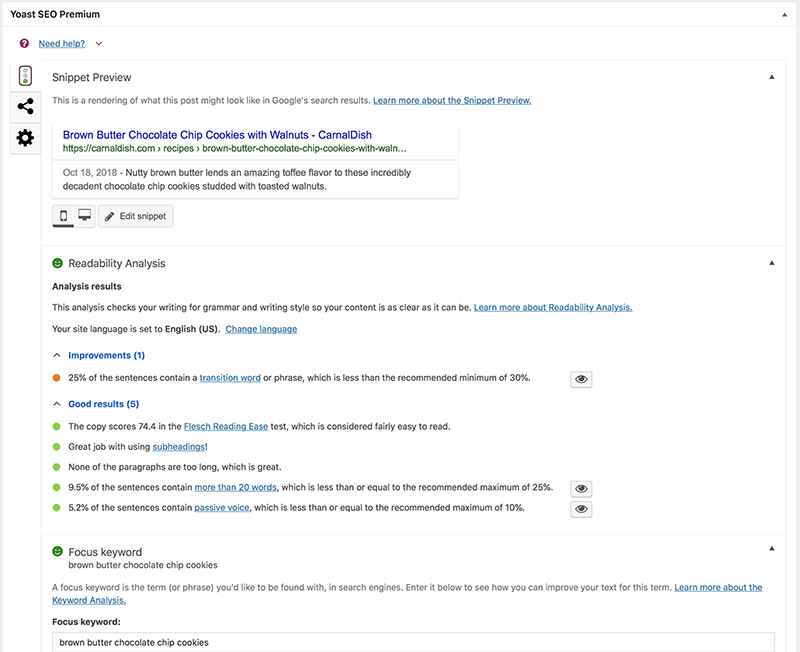
A screenshot of Yoast SEO Premium. They guide you and give you warnings for each post, letting you know exactly how to format it so it performs better on search engines.
I highly recommend Yoast because they take the guess-work out of SEO so that all you have to do is focus on your content. I use the premium version, but the free version will definitely get you going and keep you going for a long time. Yoast offers premium courses to teach you everything you need to know about SEO and how to boost your rankings in search engines, and they also give you a ton of very useful free information.
Get the Word Out
- Use your social media platforms. Talk about and share your blog on Facebook, Twitter, Tumblr, Pinterest, Instagram/IG Stories, Snapchat, etc. Don’t spam people, but don’t hesitate to initiate organic conversation about your brand and content. Social Media plugins like Social Warfare (see below) are very easy to use and help you and your readers share your recipes directly from your site.
- Link building. Boost your SEO when you join the conversation on other high-traffic blogs and websites by way of leaving a comment. Posting a comment and leaving your URL is great for SEO and indexing. Trust me on this. It may sound shady, but it’s really not. It’s smart.
- Pinterest is a huge way to build traffic. All it takes is one SAHM to re-pin your “How To Make a Cake Out of Post-its” recipe and boom! You’ve got a ton of other interested people trying to find out this amazing recipe. Don’t sleep on Pinterest.
- Consider guest-blogging for a more well known blog. This can help bring attention and traffic to your own blog. Building relationships with your peers is never a bad thing.
- Email. Collecting email is extremely important! It helps you connect with your readers like no other. Let’s say you posted a new recipe. You hop on every single social media platform you can to tell all of your followers. But only a small percentage of them will actually see it, as most platforms are fast-moving and in real time. Also, it’s not directed to them personally, so they can easily miss it — and who has time to @ each follower you have (plus that’s hella spammy and will get you blocked). With email there’s a higher chance they’ll see it, because they chose to sign up for it. So make sure you create an easy non-spammy environment that will make your readers feel comfortable and happy to give up their email address so you can send them content sporadically.
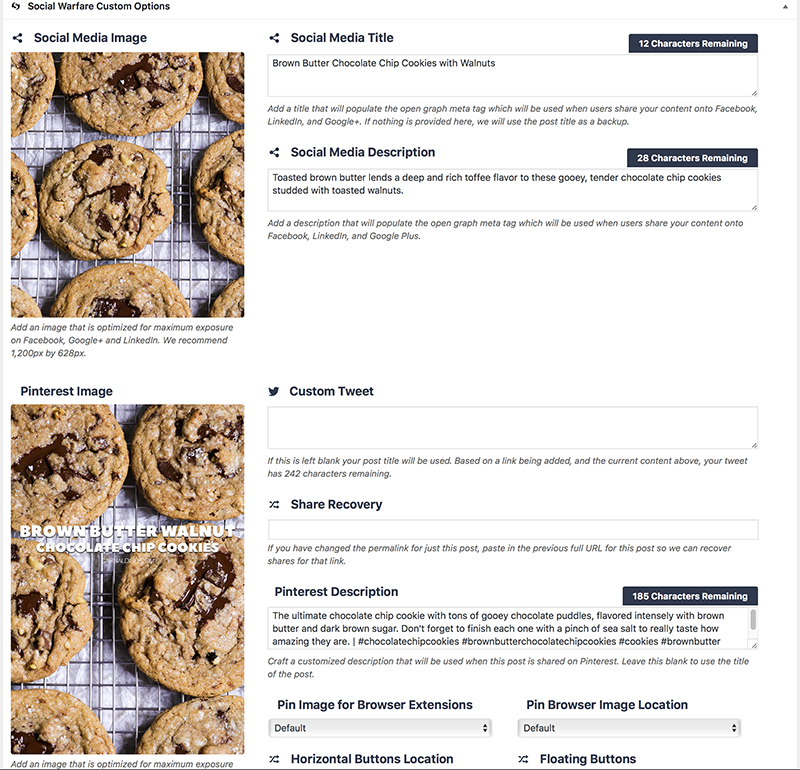
Social Warfare plugins make it easy for you to get your posts ready for Twitter, Facebook, and Pinterest.
Ways to Monetize
Nobody should be blogging for free — no matter what the niche is. You’re supposed to love the content you’re putting out there, but you shouldn’t strive to do it all for free. There’s a whole lot of money to be made on the internet. Until you are pulling in a decent amount a month, keep your day job. Just know that eventually, you could be making a decent living, or side-hustle just from blogging.
When you first start out, you’re probably going to make peanuts…lint…pocket dust. I just gotta tell you the truth so you know what to expect. I’m here to tell you, yes it sucks, yes it gets better, and yes it takes time! There are countless ways to monetize, but the following can get you started.
- Ads: You may hate ads, but they’re necessary if you want your blog to bring in some revenue. If you’re just starting out, try Google Adsense. They allow you to insert a code which places an ad on your website. Also try Gourmet Ads. When you start gaining a ton of traffic, you can check out ad management companies like Mediavine.
- Affiliate Linking: The most known and used one is Amazon Associates. It’s free to join, and considering how often we all use Amazon, why not make some extra money just by using your unique link code? There are tons more affiliate programs tailored to your specific niche, so do some googling to find out which ones will best suit you.
- Youtube: Create video content in conjunction to your blog, and link the two back and forth. Youtube can definitely help bring in some extra money via ad placement, depending on the content and frequency in which you upload. If I’m not mistaken, they have new requirements in place before you can actually monetize your videos, but if having a channel is your passion, you’ll reach that goal in no time.
- Influencer Networks: These are the networks you join when you’re ready to start incorporating sponsored content into your blog and/or social media. They’re also a great way to set up fun giveaways with your readers, whether its on your blog or social media outlets. Please note that many require you have a specific minimum of social media followers to join, while others will work with what you have. You will not get approved for every campaign you apply for. Don’t apply to any campaign that doesn’t match your content. Also, don’t over-saturate your blog with sponsored posts. Here are just a few great companies:
The Design’y Stuff
Video & Photography
I use four different cameras for my blog and videos, interchangeably. I didn’t buy all of this stuff at once, so don’t feel like you need all of this equipment immediately. Buy one thing, and slowly build from there.
- Canon 60D (hard to find old model, but I still love it)
- Canon 80D (this one has auto-focus for video which is super sweet!)
- Canon G7X (great for vlogging/video)
- iPhone 8+
My personal opinion, the lenses matter more than the camera body. If you’re looking for a more inexpensive entry-level DSLR, check out the Canon Rebel line.
Lenses I use
- Canon EF 50mm f/1.8 STM Lens
- Canon EF-S 60mm f/2.8 Macro USM Fixed Lens
- Canon EF 50mm f/1.4 USM Standard & Medium Telephoto Lens
- Canon EF-S 10-18mm f/4.5-5.6 IS STM Lens
- Canon EF-S 18-135mm f/3.5-5.6 IS Standard Zoom Lens
Memory Cards I use
- SanDisk Extreme PRO 64GB (I have 4 of them)
Tripod
I use the Neewer Camera Tripod Monopod with an extender arm (when needed). I also use the Manfrotto Mini.
Lighting Equipment
By far the most important factor for your photos is lighting. Diffused natural light is your BFF, but sometimes it’s just not an option. Starting out, you don’t need to spend too much on lighting, but you definitely want to invest in some kind of starter kit to get you going. If you’re really short on funds, search Youtube to learn how to set up a DIY lighting system. If I’m shooting during night time, I use as many of these lights as possible, but find that just 2 or 3 work fine during daylight.
- LimoStudio’s Photography Studio
- StudioFX Softbox Lighting Kit
- Neewer Ring Light Kit – 18″
- Lowel Ego Table Lamp (I own two)
Photo Editing
Even with all of the light Jesus can provide you, you still have to spruce your photos up. I’ll repeat what I said initially, gorgeous photos are a huge part of this. Your camera and lighting systems can only do so much. They’ll do most of the work, but now it’s time to bring it home. I use both Adobe Photoshop and Lightroom to edit and create graphics/images for my site. Both come along with the Creative Cloud Plan for only $9.99 a month. They even have discounts for students.
Here’s a before and after using Lightroom.
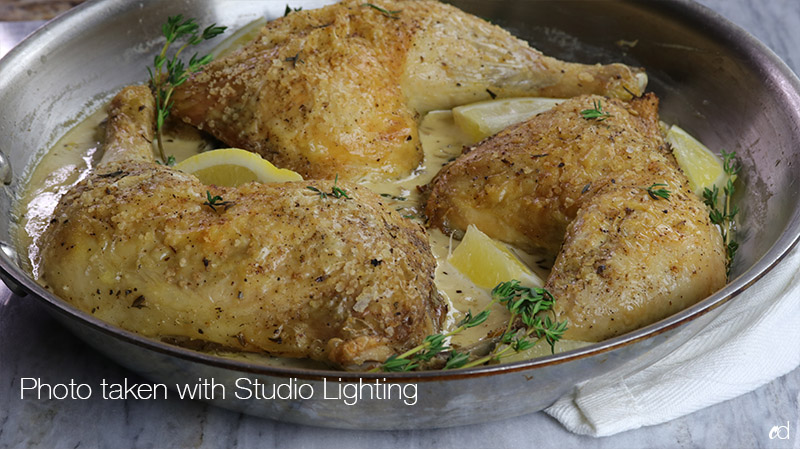
This pic isn’t terrible, but it’s not very appetizing. Let’s give it some life.
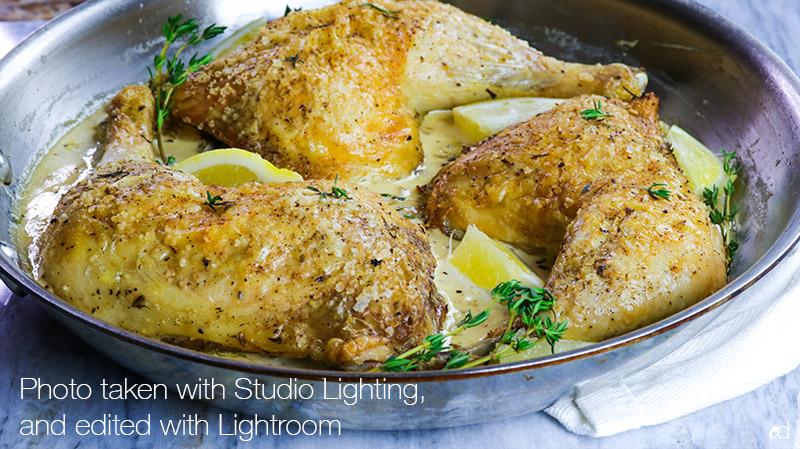
Now it looks edible, and you can see the detail as you’re meant to. And yes, EVERYONE edits their food photos. They all start out dead and flat until they’re ran through Lightroom or Photoshop, don’t be fooled.
Video Editing
I use Final Cut Pro X to edit my Youtube and Mediavine videos. I also recommend iMovie, which comes free with your iMac, iPhone, or MacBook — I’ve definitely edited some quick videos using iMovie on my iPhone. It’s super convenient.
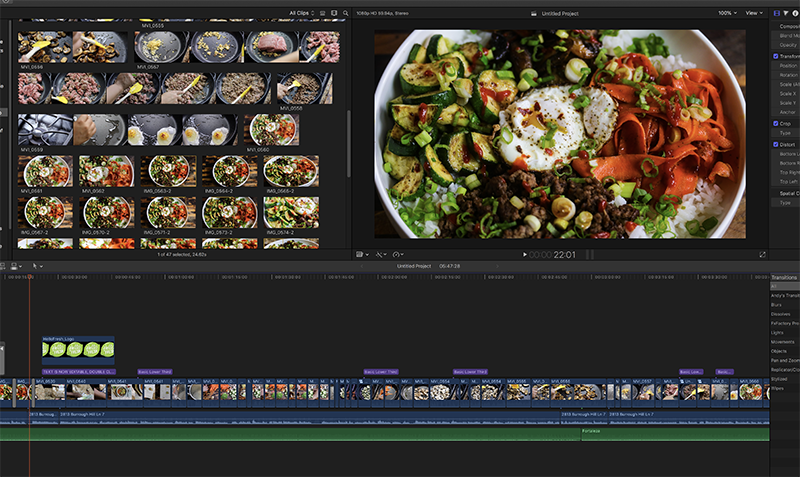
If you’ve used iMovie, you’ll find yourself adapting to Final Cut Pro X very quickly.
Designers for Hire
Maybe you have zero experience with the aforementioned. Or, you just don’t have time to learn — I am not mad at that. We are all busy, sometimes we have to let the professionals do the work for us. Here’s a list of web/graphic/branding designers, photographers, etc. ready to work with you in achieving your aesthetic.
- Zoey
- Jeremy Biggers
- Greg Stewart
- Anaysha Parker
- Tavaress Anderson
- Sincero
- Devin Drake
- SaVonne Anderson
Lastly, a bit of advice
Am I allowed to keep it real with you? I am? Bet. Check this out. You are going to put in a lot of work doing this. You are going to put in a lot of hours. And you will not make a single penny to start. Making money is everyone’s goal, but you seriously need the passion to do this in order to see that money. If blogging isn’t your thing, don’t attempt it. But for those of you who are willing to put in the long hours, to see the rainbow at the end…this is for you:
If your blog is brand spanking new, the only thing you should be focused on is getting it filled with quality content. Content is your number one priority. Once you fill your blog with good stuff, then you can figure out how to drive people to read it. Set a goal to gain at least 50 loyal readers for the first month, and go from there. You may surprise yourself and do better than you initially thought, but never take your audience for granted. Give them quality to keep them coming back, and invested in you and your brand. Make sure you’re putting out amazing stuff that will make people not only want to come back, but share your blog with others. Word of mouth is everything.
If you already have a blog and just want to see more traffic/income, figure out what you’re doing wrong or what you could be doing more of. Do you have Google Analytics installed? Are you utilizing Google Webmaster Tools? You should. They can let you see in real time what’s going on with your metrics. There are tons of free resources online that teach you how to read and understand your websites metrics. When you learn the basics, you can implement new strategies and convert all of your new traffic into income.
Think of fun ways to get readers involved with your content. Personalize your stories. Anyone can just post a recipe, but what’s special about the meal to you? Describe it to your readers. Develop a story or narrative about what you’re sharing, so people feel connected to you in some way. I’m not saying you should write some long dissertation, because people have the attention span of a spoon these days. But definitely put yourself into your content, no matter how few or many words you choose to use.
Remember, your food blog is a lot like a slow cooker meal. It starts out as not much at all, but over time, it gets better and better. You’ll eventually figure out your voice and once you do, the content will come pouring out of you. You will make mistakes, but you will learn from them. Every blogger on earth is still trying to figure it all out, none of us have it all together — even the one’s making millions. One big mistake can cost them their livelihood.
There’s tons, and I mean TONS of blogs out there. Many of them look alike, feel alike, sound alike, post the same kind of content/recipes, etc. But that’s the beauty of it. There’s a piece of the pie for everybody. Two blogs that may look and feel the same, may attract two totally different sets of readers. The goal is to find your own voice. Make yourself stand out. Can you imagine if there was just ONE food blog out there, because everyone who wanted to do one said, “Aww man, thatfoodblog.com already exists! Nobody is going to want to read my stuff, it’s already been done.” Nah, don’t think like that. Don’t compare yourself to anyone else — yes, I know that’s easier said than done, but don’t. DO YOU! It’s a great thing to be inspired by other people, but don’t copy their hustle — just learn from it.
Happy blogging!
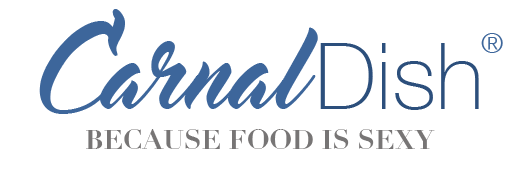
Leave a comment